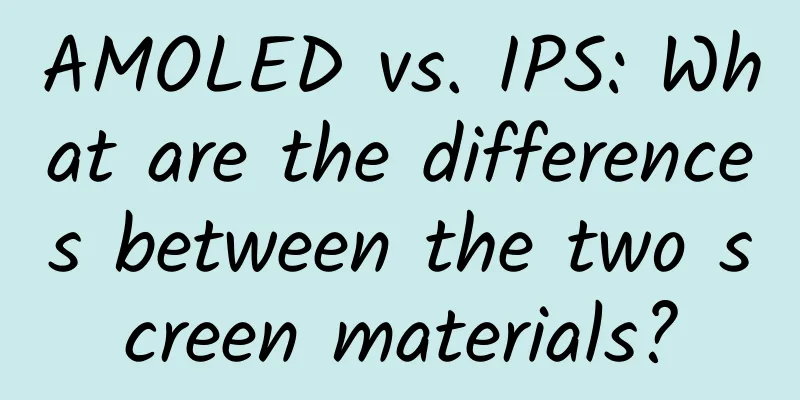Why do Android phones always get slower and slower?

|
According to third-party research data, 77% of Android phone users admit that they have experienced the impact of their phones becoming slow. Baidu search for "Android slow" also has more than 4.6 million results. In the industry, Android phones have always been known to "get slower with use", and this phenomenon even goes beyond the hardware category - many mid-to-high-end Android phones are better than the same generation of iPhones in terms of hardware parameters, but they still enter a "less smooth" state after using them for half a year to a year - this is undoubtedly a troubling thing. However, to answer this question, we need to go back to the last century to find the origins of smartphones. Western history and fantasy literature are very keen on expressing the setting of "bloodline". Its traditional culture believes that bloodline can determine talent and leads to the philosophical thinking of "whether fate is predetermined". For example, the well-known "Harry Potter" series, after deconstruction, it is not difficult to find that this is actually a story about the fight between the Gryffindor and Slytherin bloodlines and their descendants (Harry Potter is a descendant of Gryffindor and inherited its courage, and Voldemort is a descendant of Slytherin and has its ambition), and the ubiquitous prophecy (one will eventually kill the other) also implements the traditional fatalism complex in the West. In the technology industry, the definition of "bloodline" has been replaced by "genes". The genes of a company determine its areas of expertise. This evaluation has also been widely accepted, becoming a unique idealist concept in the materialistic era and has withstood the test of facts. When we try to explain why Microsoft lost in the Internet, Google retreated in social networks, and Baidu stopped in e-commerce, we will sincerely sigh that "it turns out that the script was written many years ago." Similarly, the answer to why the "slowness" problem of Android phones is always more serious than that of iPhones is doomed from the beginning. In 1965, Bell Labs, General Electric and MIT began to work together to develop an operating system that was both easy to use and powerful. After six years of collaboration, Ken Thompson, a software engineer at Bell Labs, completed a system called Unix during his vacation, which eventually became a commercial product of Bell Labs' parent company, the American telecommunications giant AT&T, and launched a decades-long copyright operation. Although there were many variants later, strictly speaking, Unix is not an open source operating system. In 1991, Linus Torvalds, a Finnish college student and computer hacker, was fascinated by Unix, but could not afford a workstation to run Unix, so he tried to write an operating system called Linux in the same programming way. Inspired by the father of free software, Richard Stallman, he added Linux to the Free Software Foundation (FSF), allowing everyone to use, copy, modify and even sell the Linux system, while assuming open source obligations and prohibiting attempts to close Linux. The reason why we have to go to such great lengths to tell the stories of the two operating systems, Unix and Linux, is because iOS and Android are derived from Unix and Linux respectively. In other words, it is the characteristics of Unix and Linux that cause the huge difference in the user experience between iPhone and Android phones. Jobs once invited Linus Torvalds, the founder of Linux, to work at Apple, to give up the open source of Linux and to help develop the closed Mach kernel of Mac OS. After a big fight with Jobs, the latter clearly refused. Since the beginning of Mac OS, Apple has regarded the privatization of the operating system as a corporate strategy. In Jobs' words, he put iOS into the box of iPhone and sold it to users. Therefore, the reason why iPhone does not become "more and more stuck" is because Apple has the highest management authority over its mobile phones from hardware to software. In a closed environment, third-party applications cannot call instructions that exceed the iPhone's tolerance limit, and naturally cannot cause continuous system damage. On the other hand, due to the open conditions of open source, Google cannot restrict third-party applications from the code port. At the same time, because the Linux core setting application must obtain ROOT permissions when calling system functions, this also leads to a large number of applications being controlled at the entire ROOT level due to the need to implement a single function, and can read and write in any storage location of the Android phone. This high degree of freedom is tantamount to opening Pandora's box, making it impossible for Android phones to defend against malicious apps in advance. This is also the reason why open source software is controversial and resisted in the commercial field: it only cares about whether it grants users freedom - this freedom also includes the freedom to cross boundaries - without considering how to avoid the risk of abuse from the worst starting point. Although Google, as a giant, has been trying to unify the management of the industry chain, when this industry chain is becoming increasingly large and even Google can only play one of the roles, it is reasonable for Android to lose control. For example, the latest version of Android usually takes more than a year and a half to make the proportion of Android phones activated by it exceed 50%, but iOS 7 only took two months to update more than half of iPhones. In addition, if an application is punished by Apple from the App Store, it can no longer be installed on any legal iPhone. However, if an application is expelled from Google Play by Google, it can still log in to various third-party application markets and provide normal download and installation. Therefore, this inherent shortcoming of Android has given rise to a "mobile phone tuning" market and driven a new industrial chain. The first level of "phone tuning" is at the system level. In the planning of Android 4.4 and the subsequent Android L, the application running mode is changed from Dalvik to ART. The principle is simply the "pre-compilation" effect, that is, when an application is first installed on Android, its bytecode has been compiled into local machine code, reducing the startup and execution time of subsequent application runs. According to the results released by Google itself, in different performance test apps, ART's speed has increased by an average of 80% compared to Dalvik. In some projects, ART's improvement has even exceeded 1.5 times, which is a very gratifying result. This is Google's effort to solve the Android slowness problem from the source, but it only helps with performance optimization and cannot solve the problem caused by the illegal use of resources by applications. At the same time, due to the "pre-compilation" when installing the application, the entire installation time will be longer, and the generated file after installation will also be larger. For example, the latest Google installation package is only 6.9M, but the size of its APK after installation reaches 28.3M, which will occupy too much storage space on Android phones. The second level of "mobile phone tuning" is at the ROM layer. As the world's largest Android market, many Chinese mobile phone manufacturers develop dedicated ROMs to enhance their products. Most ROMs also consider optimizing the Android system. For example, MIUI V6 claims to "introduce a variety of Linux system kernel memory optimization technologies to improve application running efficiency." In other words, just like what Google does, the main optimization work of ROM manufacturers is to make changes to Linux and apply various patches to make its underlying language better adapted to various mobile terminals. Take MIUI V6 as an example. When introducing new features, there is such a thing: "ZRAM scheduling optimization technology". In fact, ZARM is a memory module in the Linux kernel. Its function is to allocate a part of the memory to act as a virtual disk to carry the swap partition of Linux, compress some tasks and accommodate them, so as to improve the utilization rate of memory and let the CPU serve the memory (because the current smart phones generally have excess CPUs and the memory is the bottleneck). However, ROM is also a double-edged sword. Its modifications to the underlying Android system and its occupation of memory space both risk increasing the load on the phone. The third level of "phone tuning" is at the application layer. The accidental or deliberate occupation of a large number of applications in the phone is the core reason why Android phones are getting slower and slower. Too many applications are keen to stay in the memory space and leave a lot of fragments in the storage space, which is the culprit of the trouble. This is also why instant cleaning applications have gradually become standard on Android phones. The Android system has seven types of processes, namely foreground processes, visible processes, main services, secondary services, background processes, content supply nodes, and empty processes. When no cleaning applications are installed, an Android phone can only rely on the system's default allocation mechanism to automatically adjust memory usage. As long as the application makes a request, most processes will be retained in the memory as long as they are opened. This was originally intended to save users time by not having to reload the processes when they are activated again. However, Android did not expect that fierce market competition would drive applications to produce a "bad money driving out good money" trend. For commercial purposes, many developers try every means to keep applications in a potential running state even when they do not need to be kept in memory. One or two is fine, but once the number increases, Anrdoid phones will frequently freeze and heat up. Here is a brief introduction to several processes that are often killed by cleaning apps: 1. Background process (Hidden) - This is the process that is scanned and identified with the highest priority by the cleanup apps, because most Android users do not use the back button to exit when switching applications, but directly press the Home button. The former will make the application enter an empty process (which occupies relatively less resources), while the latter will remain as a background process (which occupies relatively more resources). Especially when game apps are running in the background, they will compete with other apps for resources, and will not care whether the app is currently being used by the user. Currently, about 20% of commonly used apps start connecting to the Internet in the background even when not running, mainly to submit product and user usage information, obtain advertising information, and check whether to upgrade, etc.; 2. Secondary Servers - such as some enterprise suites, email contacts, touch interfaces, etc. Many of these processes are built-in to the system. Some users will use them, but some users may not use them or have alternative applications. 3. Content Provider: This part of the process has no program entity and only provides content for other applications, such as calendar provider, mail provider, etc. In addition to occupying memory resources, it also occupies the network, so it will also cause unnecessary burden on Android phones; 4. Empty process - If you exit the application using the back key, most applications will leave an empty process in the memory of the Android phone. This process has no data running, but it will record the historical information of the application and has almost no value. Similarly, the priority of killing this part of the process content is also very high. In addition to excessive consumption of memory, Android phones are also prone to accumulating a large amount of redundant data in storage, including pre-installed applications that cannot be uninstalled, residual files after uninstallation, and cache generated during the use of applications. Since Android itself does not provide management tools, even after connecting the phone to a computer, it is a folder package with the same tree structure as Windows. It is difficult for users to independently judge which folders can be deleted and which folders are essential for the system, which will ultimately lead to a situation where the phone size and space are getting smaller and smaller. The problem of "mobile phone adjustment" may bring operational burden to users, and the psychological pressure is greater than the behavioral pressure. Users may not forget to use the cleaning function every now and then while playing with their mobile phones. This "unique" operating habit compared to the iPhone is also the reason why Android phones always look like a semi-finished product or an engineering machine. As a winner of Toutiao's Qingyun Plan and Baijiahao's Bai+ Plan, the 2019 Baidu Digital Author of the Year, the Baijiahao's Most Popular Author in the Technology Field, the 2019 Sogou Technology and Culture Author, and the 2021 Baijiahao Quarterly Influential Creator, he has won many awards, including the 2013 Sohu Best Industry Media Person, the 2015 China New Media Entrepreneurship Competition Beijing Third Place, the 2015 Guangmang Experience Award, the 2015 China New Media Entrepreneurship Competition Finals Third Place, and the 2018 Baidu Dynamic Annual Powerful Celebrity. |
<<: Peng Gang of LeTV: Users are the only ones who decide the direction of product development
>>: Zhaocaibao: What are the risks behind innovation?
Recommend
Smart home: The battle over standards will leave corpses everywhere
Under the background of the new normal of the eco...
Summary of the use of global variables and local variables in Android
As the name implies, global variables are variabl...
Huge waves suddenly rose on the calm water surface. Is the "water monkey" making trouble again?
Above the quiet lake, a bird is wandering in the ...
Ten thousand words of practical information | How to achieve commercial monetization of mobile application advertising?
Having been engaged in mobile advertising commerc...
How would you spend a 1 million budget? 4 major platform optimization methods!
Written in front The original intention of writing...
The color of salt is so attractive! Unlock the secrets of China's most beautiful salt lakes
Say goodbye to the crowded popular attractions. T...
Understand the rise, turning point and breakthrough of Internet finance in one article!
The rapid rise of any industry is not accidental....
GITC 2014: A look at cutting-edge technologies from the perspective of smart terminals
[[120832]] As one of the greatest and most import...
For the used car market, how much impact can the entry of the giant Xianyu cause?
The bigger the storm, the more expensive the fish...
Give technical staff some non-technical advice
[[233659]] I have been working in IT for many yea...
Is it wrong to fold the quilt immediately after getting up? How many of these "hygiene" misunderstandings in life have you fallen into?
Is it wrong to fold the quilt immediately after g...
CES2015: Can't wait, Apple accessory manufacturers have already displayed new products
Before the opening of CES 2015, Griffin, a well-k...
LePar goes straight into the heartland of traditional color TV manufacturers and will become the first super TV in three years
In the past, the "monopoly" of traditio...
Taking SEM advertising as an example, how data analysis can optimize promotion methods!
% ignore_pre_1 % Advertising guru John Wanamaker o...
"One bite makes your neck stretch two miles!" This kind of yogurt has become very popular recently, but two types of people should be careful when eating it!
Recently, there has been a trend of "dry yog...









